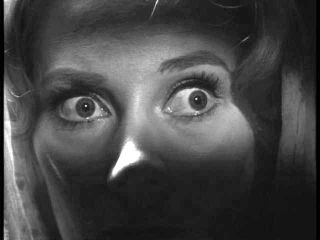Fear
Do You Live in a World of Fear?
Responding with “stress skills” to get back in balance.
Posted January 21, 2023 Reviewed by Vanessa Lancaster
Key points
- We can move from a world of fear to hope by combining awareness with positive action.
- Constant fear produces chronic stress, undermining our physical and emotional health.
- Steps to help move from fear to hope include managing your stress responses and recognizing negative thought patterns.

Our culture conditions us to live in a world of fear. The daily news brings visions of violence, war, catastrophes, and political unrest. Social media offers illusions of success that can make us feel inadequate (Brailovskaia et al., 2020; Twenge, 2019). Advertisements tell us that we’re not good enough, that we’re too fat, too thin, too old, too young, and too ugly to be accepted, and that we need to buy the latest products just to be okay.
According to leadership expert Lance Secretan (2010; 2023), our school systems use operant conditioning, controlling our behavior with reward or punishment, and our businesses do the same, offering promotions and raises or the threat of losing our jobs. Treating their employees like replaceable parts, too many corporations subordinate their people’s needs to bottom-line profit margins. Currently, American high-tech companies are laying off thousands of workers, wreaking havoc on their personal lives.
Living in a world of fear produces chronic stress and impairs our immune systems, increasing inflammation and the risk of depression and physical disease. Stress also shuts down our higher brain centers, blocking our ability to think creatively, to discover solutions to our problems (LeDoux, 1996).
But we can begin moving from a world of fear to a world of hope by combining awareness with positive action. Drawing upon recent research, hope expert Kathryn Goetzke has developed five key strategies to help us move from fear to hope (Dreher, 2022; Goetzke, 2022). They are featured in her book, The Biggest Little Book About Hope.
The first step is becoming aware of when we’re stressed and anxious, responding with “stress skills” to get back in balance. Then we can take taking the next steps to build our hope. These five key strategies combine in the acronym SHINE, and you can begin using them right now.
- S–Stress skills. Learning to recognize and manage your stress reactions, using strategies such as a 90-second pause, mindful breathing, prayer, and taking a walk in nature (Nisbit, Zelenski, Murphy, 2011; Shapiro, 2009).
- H–Happiness habits. Developing a foundation of positive feelings with habits like smiling, exercising, spending time with friends, volunteering, or pursuing a favorite hobby (Fredrickson, 2002).
- I–Inspired actions. Setting meaningful, achievable personal goals and moving toward them one step at a time (Feldman & Dreher, 2012).
- N–Nourishing Networks. Connecting with people who care about and support us, including trusted friends and family members, teachers, coaches, ministers, and counselors, and working to connect with them regularly to nourish those networks (Fredrickson, 2013).
- E–Eliminating challenges. Recognizing negative thought patterns that get in the way of hope and challenges like limiting thinking, negative thoughts, worry, and rumination, and then using the first four strategies to overcome them.
Despite the negative news, uncertainty, and challenges in our world, with these five key strategies, you can begin moving from a world of fear to a world of hope.
________________________
This post is for informational purposes and should not substitute for psychotherapy with a qualified professional.
© 2023 Diane Dreher, All Rights Reserved.
References
Brailovskaia, J., Rohmann, E., Bierhoff, H., & Margraf, J. (2020). The anxious addictive narcissist: The relationship between grandiose and vulnerable narcissism, anxiety symptoms, and Facebook addiction. PloS ONE 15 (11): e024163: https://doi.org/10.1371/journal.pone.0241632.
Dreher, D. (2022, October 7). Turning from depression to the light of hope. https://www.psychologytoday.com/intl/blog/your-personal-renaissance/202210/turning-depression-the-light-hope
Feldman, D. B. and Dreher, D. E. (2012). Can hope be changed in 90 minutes? Testing the efficacy of a single-session goal-pursuit intervention for college students. Journal of Happiness Studies, 13, 745-759.
Fredrickson, B. (2013). Love 2.0: How our supreme emotion affects everything we feel, think, do, and become. New York, NY: Hudson Street Press.
Fredrickson, B. & Joiner, T. (2002). Positive emotions trigger upward spirals toward emotional well-being. Psychological Science, 13, 172-175.
Goetzke, K. (2022. The biggest little book about hope. (2nd edition). New York, NY: Morgan James Publishing. For more about Kathryn’s hope work, see https://kathryngoetzke.com/
LeDoux, J. (1996). The emotional brain. New York, NY: Simon & Schuster.
Nisbit, E. K., Zelenski, J. M., Murphy, S. A. (2011). Happiness is our nature: Exploring nature relatedness as a contributor to subjective well-being. Journal of Happiness Studies, 12, 303-322.
Secretan, L. (2023, January 2). Reawakening the Human Spirit. Global Leadership Impact Summit. https://www.youtube.com/watch?v=7OG8czCZUAM
Secretan, L. H. (2010). The spark, the flame, and the torch. Ontario, CN: The Secretan Center.
Shapiro, S. L., (2009). Meditation and positive psychology. In C. R. Snyder & S. J. Lopez (Eds. ). Handbook of positive psychology, (pp. 601-610). New York, NY: Oxford University Press.
Twenge, J. M., Spitzberg, B. H., Campbell, W. K. (2019). Less in-person social interaction with peers among U.S. adolescents in the 21st century and links to loneliness. Journal of Social and Personal Relationships. 20 (10), 1-22.
Picture: Scream, Annemarie Busschers, painting, 250 x 160 cm 2010 private collection Miami. WikiMediaCommons. Creative Commons Share and share alike permission. https://commons.wikimedia.org/wiki/File:Scream.tif#file


